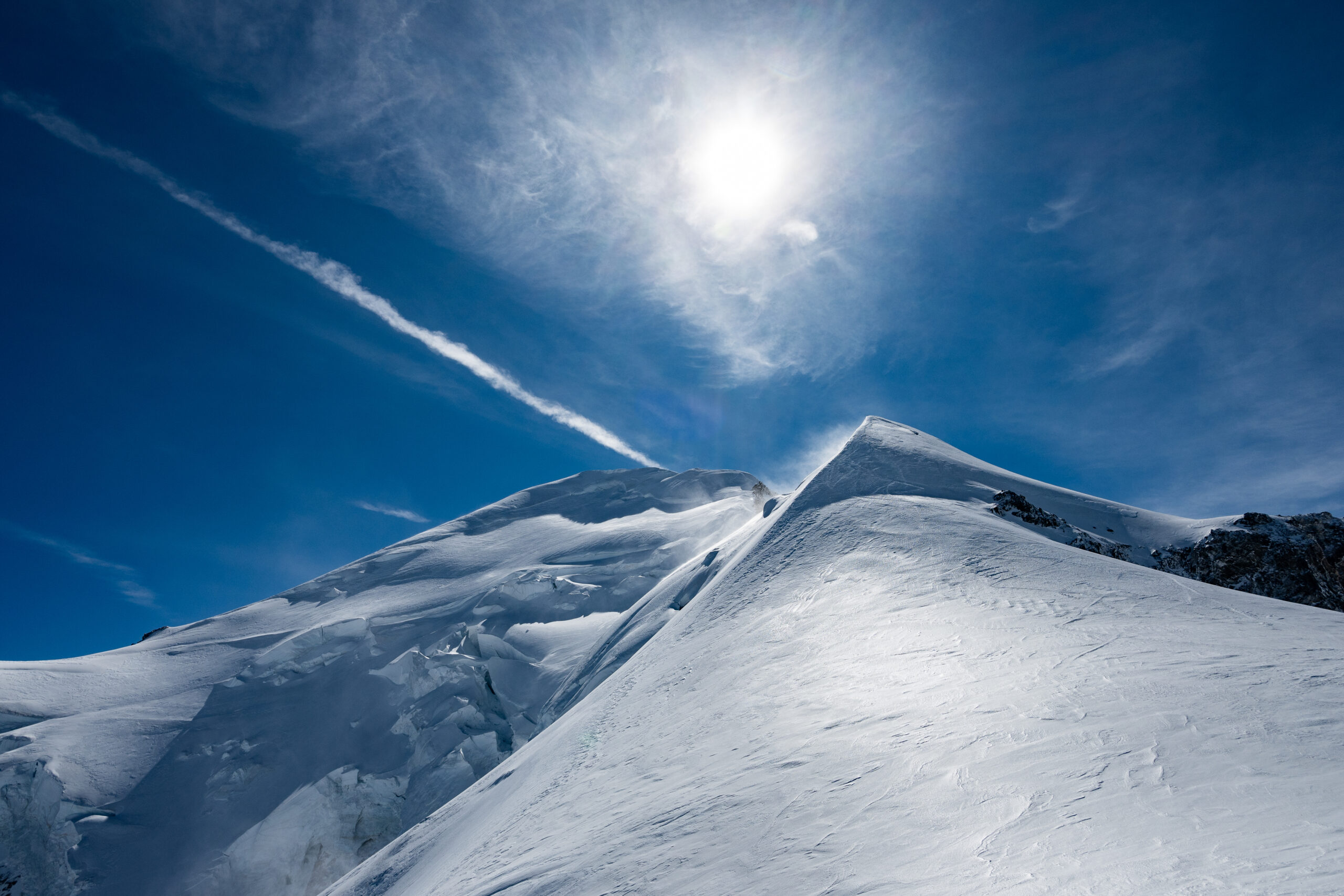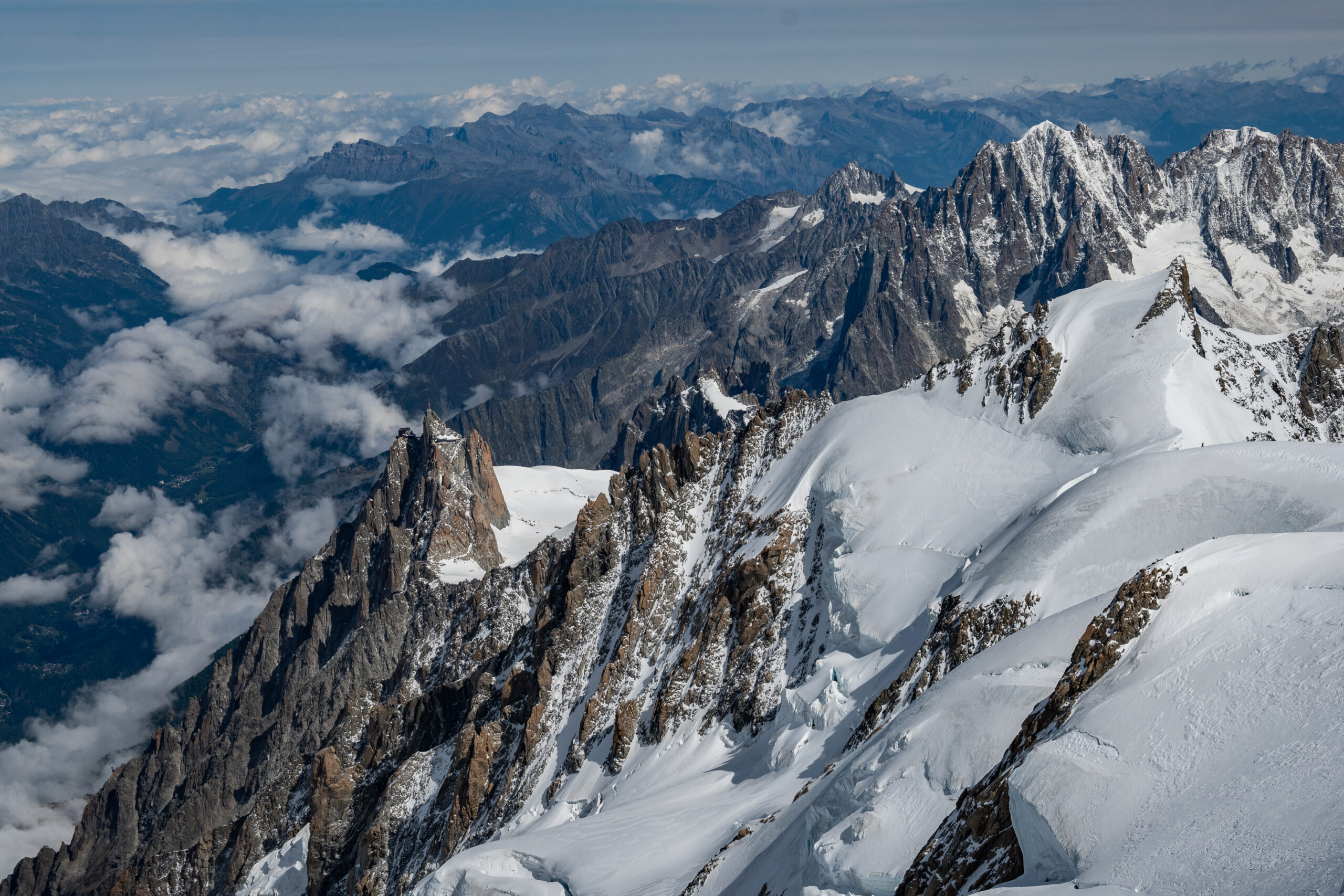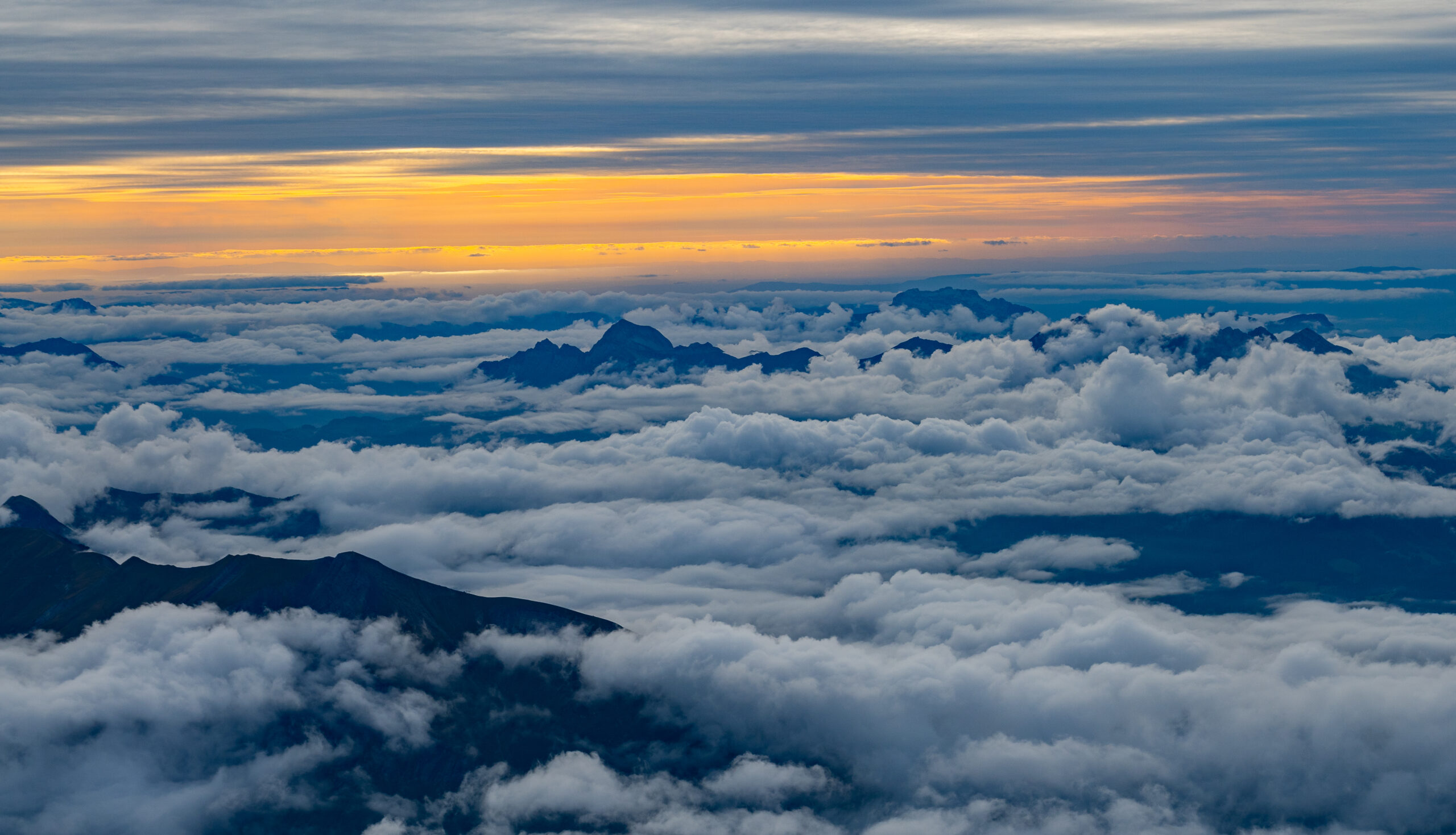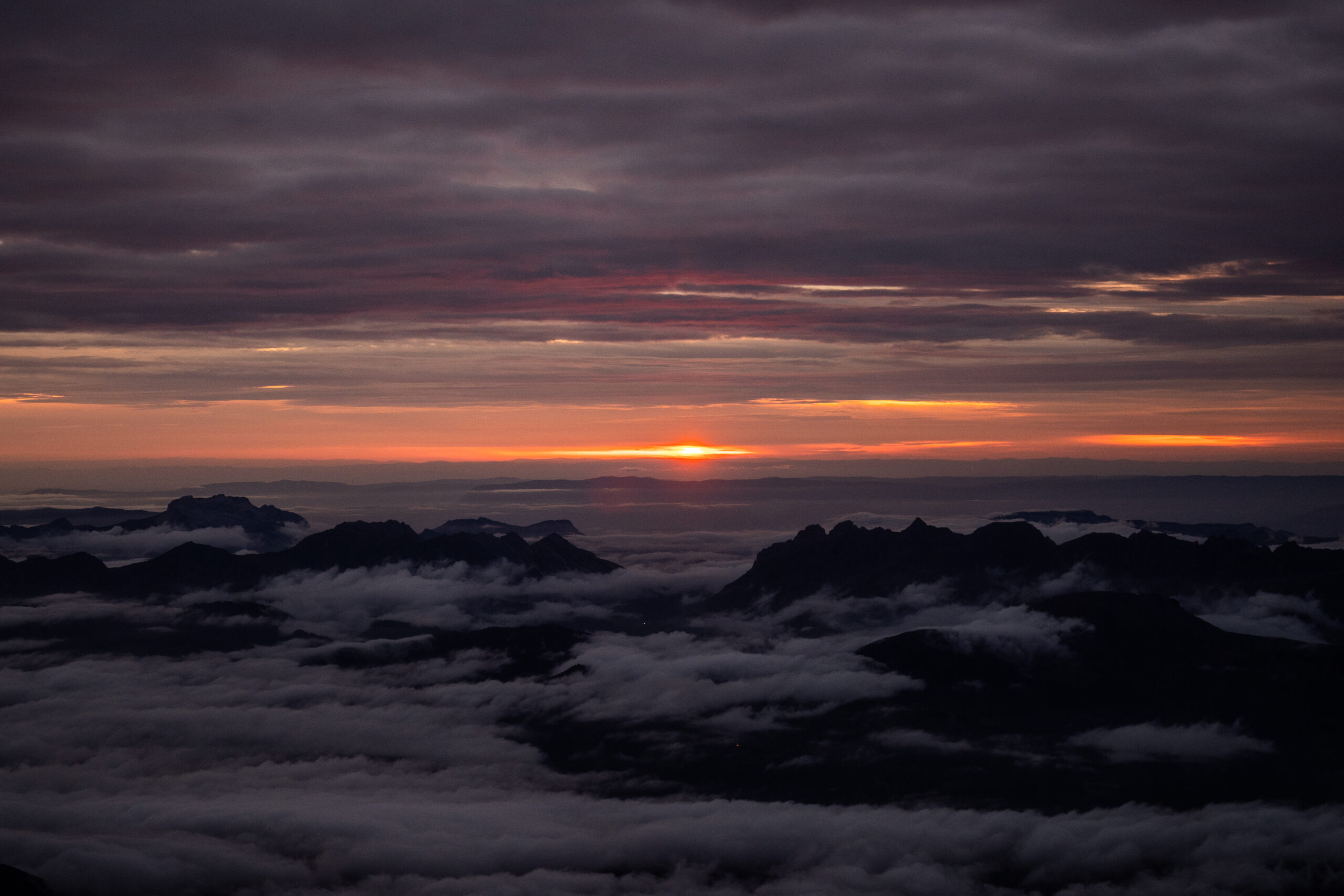After the wonderful experience of trekking to Everest Base Camp last year, I was keen to keep up my high-altitude adventures by tackling something else on my list, namely climbing Mont Blanc, at 4806m the highest point in the Alps and Western Europe. So, earlier in September I set off to Chamonix for a week to see if I could make it to the summit.
In order to spend some time at altitude and get used to using winter mountaineering gear again, the first two days of our 5-day Mont Blanc course were to be spent on a glacier, with an overnight stay at a mountain refuge.
On day one we headed up to Le Tour, a village at the head of the valley at 1490m, and after taking a gondola part way to a height of 1859m, we hiked up the rest of the way to the Albert 1er refuge, our home for the night at 2700m. After a picnic lunch on the edge of the glacier, it was time to don our crampons, harnesses and helmets and get used to the terrain.
This involved climbing up and down steep slopes until our guide Sebastien was happy we’d all got the hang of it, before then getting us to abseil into some of the shallower crevasses and then climb out of them. Tired out after all that exercise at nearly 3000 metres, we headed up to the refuge to check in.

Refuges are high mountain huts typically sleeping between 40-150 people, in basic dormitories. Basic means a bunk bed, all in a row slap bang next to each other, with the added twist that you might not know the person (of either/any sex) who will be sleeping right next to you. Interesting! We had a beautiful evening meal of soup, beef casserole and banana bread, before turning in just after 8. We were done in but also aiming for a 5am start to head up to the top of the glacier.
We could hear the wind through the night, and in the morning we awoke to strong winds and snow. A quick breakfast and we were off in the dark, winding our way round the crevasses and realising why we’d spent so much time practicing climbing out of them!
For the next 2 1/2 hours we slogged uphill into driving snow to the top of the glacier at nearly 4000 metres, where sadly Anais succumbed to her illness that she’d brought with her, and announced she couldn’t carry on and wouldn’t be able to attempt the summit.
As we turned around to head back to the refuge the wind dropped and the sun came out, instantly changing a very foreboding environment into a wonderful, sunny Winter wonderland. The sun caught the snow perfectly, and we had time to get some pics as we carefully made our way round the crevasses.

A quick lunch at the refuge then we headed back down the mountain, sadly down to 3 but now looking forward to our main objective. It was time to try and make the most of a good night’s sleep and a pizza before heading up again for 3 days on Mont Blanc.
I had a great sleep after all our efforts and woke up early on Monday to grab some breakfast before checking out and catching a train to our start point at St Gervais le Fayet. We also met up there with our second guide, Ferran, who would lead Greg, leaving Sebastien to lead David and myself.
The first hour was a very pleasant funicular railway ride to our drop-off point at Nid d’Aigle at 2372m, full of similarly clad groups all heading for the summit. Once there we all disembarked and prepared for the two-hour climb/scramble up to the Tete Rousse refuge at 3167m, which was fairly straightforward at this lower altitude and beneath the snow line until the last few hundred metres. Same format, all climbing kit off at the entrance lobby, you get assigned a bed in one of the dorms, and dinner is at 6:30, with lights out at 8.
Every evening the refuges have a guides’ meeting before dinner, where they look at the weather reports and discuss options. Now, ever since we arrived in Chamonix, we knew that there was a high wind alert, and this is the reason most attempts don’t succeed.
Anything over 50km/h is seen as a huge challenge, and over 60km/h it is simply not possible to reach the summit. As the refuge manager read out the forecast for the next day, she paused dramatically before announcing winds of 80-100km/h.
The whole hut looked aghast, as that meant all summit attempts were off.

Immediately everyone started talking, and asking questions about logistics, staying over, second attempts etc. Sebastien asked us what we thought. Our view was that, having come all this way, we would still like to try the next day, under the proviso that as soon as he said it was too risky, we would turn back. He agreed as there was no chance of staying over an extra night due to the huts being booked up, plus with the season nearly over there would be no chance to try again until next year.
We didn’t sleep well, what with the altitude, all being packed together, plus everyone thinking their dream was probably over. We were up at 5, with a potential 10-12 hours of strenuous climbing ahead of us and had a hurried breakfast whilst laying out our plans. Sebastien advised us to wear 4 layers for the first climb as we would be exerting ourselves hard, but to take everything we had with us for the rest of the climb after that as, if we did manage to get to the summit, the wind chill would be severe.
The first part of the day was a 2-hour steep climb up the rock face to the Gouter hut at 3800m, in the dark initially, roped up, wearing crampons and using our ice axes to help our upward progress. We could see a few lights from other groups, but some had decided not to attempt it, whilst others had opted for a later start to see how the weather looked.
We made it to the Gouter hut, which would be our home for the night whatever happened, and enjoyed a last hot drink whilst we added our extra layers. I had on a long sleeve thermal, long johns, t shirt, fleece, hiking trousers, thicker mid layer, down jacket and my Gore Tex jacket and trousers, plus my gaiters.

Our next objective was the Dome de Gouter at 4200m, and then to the Vallot hut at 4362m, where we had a short rest and assessed the weather. It was freezing and windy but no sign yet of the massively high winds forecast.
Sebastien felt we could make the summit, and we all agreed to go for it, and for the next couple of hours we climbed through deep snow and steep ice, until we reached the last climb to the summit. By now it was blowing a gale and bitterly cold, but when Sebastien told us it was only about another 30 minutes, we felt we could make it.
At just after 1pm we reached the summit at 4806 metres, to clear skies and great views, but the wind and cold meant the usual 15-minute summit rest and photos were out. We huddled into our down jackets, took a few quick pics, and even that froze our fingers (and as I later found out, broke my camera viewfinder), and then turned around and headed back down. The descent is a serious undertaking as it is much easier to fall, and despite being absolutely shattered and frozen our guides impressed on us how important it was to concentrate, as the summit attempt wasn’t a success until we made it back down safely.

At around 4pm, after 10 hours climbing, we made it back to the hut, dead on our feet and too tired to really enjoy our success. We ate some food and had a drink and climbed into our bunks for a sleep before dinner. After an hour or so rest we felt a bit more recovered, and were able to toast our success over dinner in the refuge.
A decent night’s sleep, another early start, then it was time to down climb the rocky route back down to the Tete Rousse, and then another 2 hours or so to the highest train stop, and after that we were on our way back down to the valley.
All in all, it was an amazing experience, most definitely a test of physical and mental strength, plus for 5 days I barely spoke a word of English, so it felt like a 5-day French listening/oral test too!
A massive thanks for all your support and best wishes, and for everyone who has donated too.
If you were waiting to see if we made it before donating or would still like to donate to try and reduce the number of suicides in West Yorkshire, you can visit our donation page here.






























